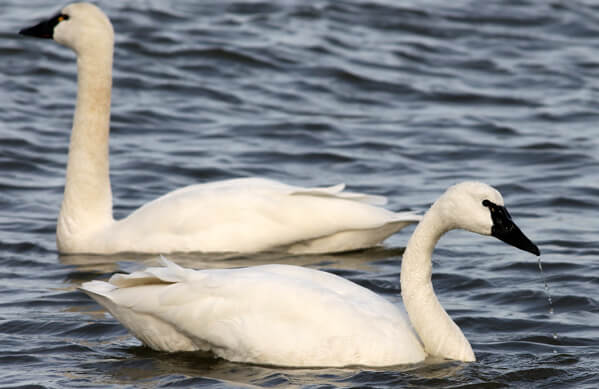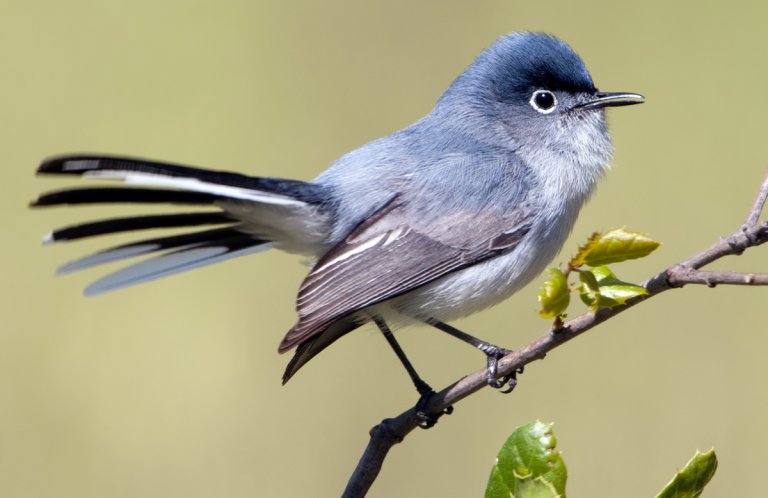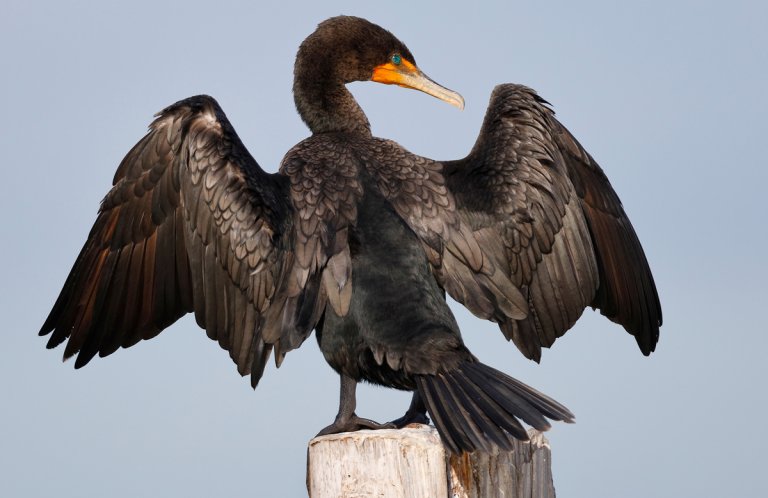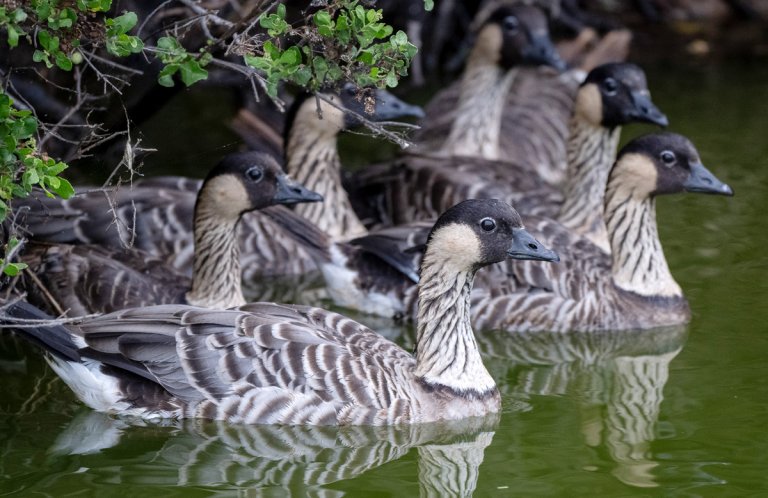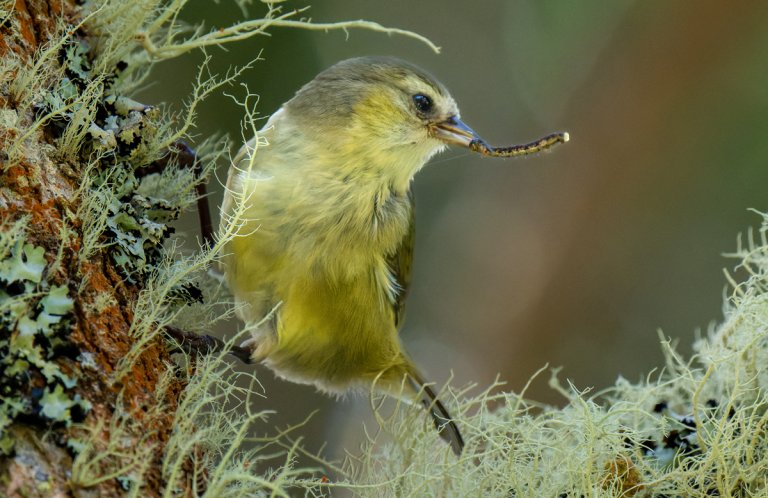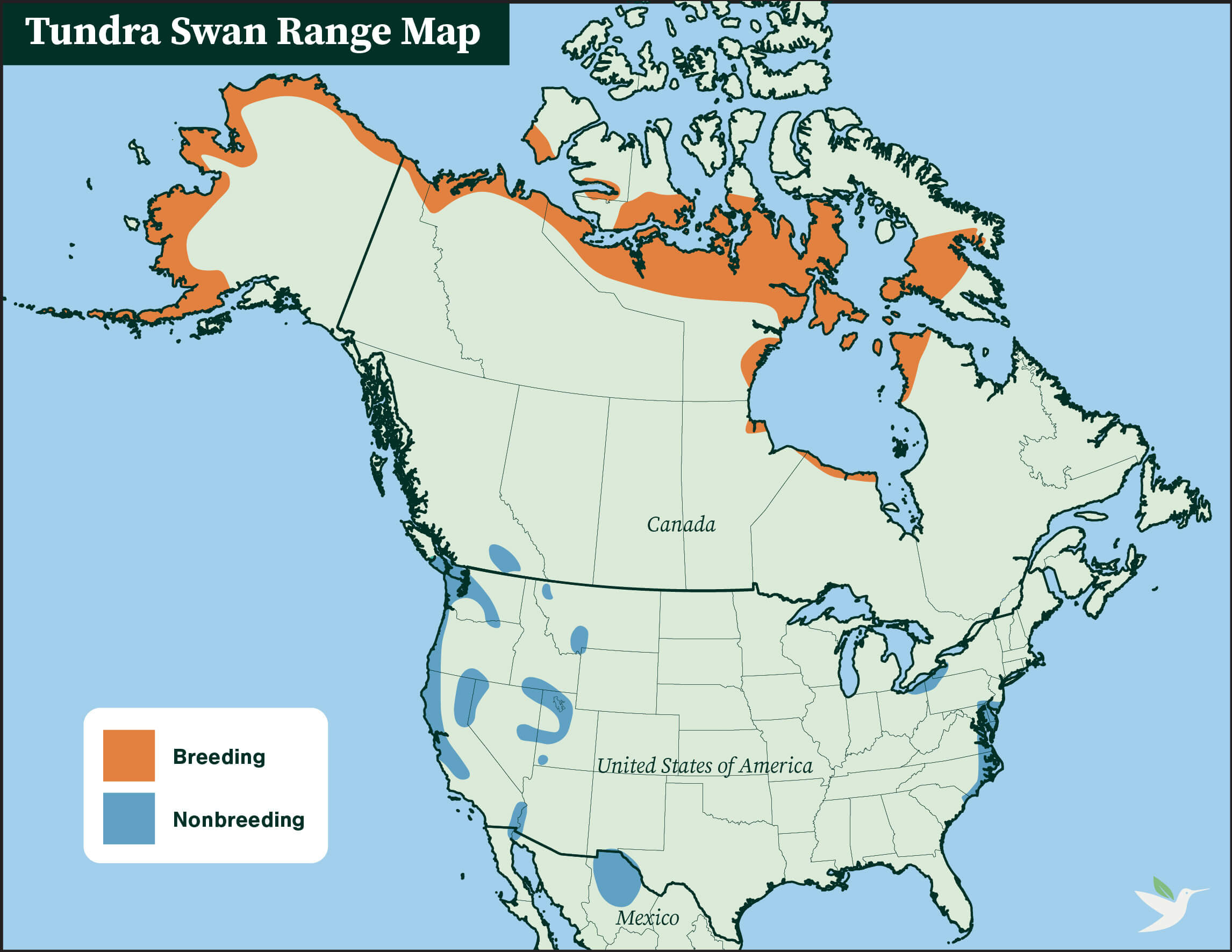
In North America, the majestic, snow-white Tundra Swan was once known as the Whistling Swan. This widespread, powerful bird was named by explorer Meriwether Lewis for its whistle-like calls. Lewis wrote the first-known description of the species during his famous expedition through the American West with William Clark in the early 1800s.
The Tundra Swan is the smaller of the two swan species native to North America — the other is the larger, less common Trumpeter Swan. Particularly around the Great Lakes and in Mid-Atlantic states, people may be most familiar with the graceful-looking Mute Swan, an introduced species that sometimes outcompetes native waterfowl.
Cobs, Pens, and Cygnets
An adult male swan is also called a cob, from the Middle English word cobbe (leader of a group). Although male and female swans look alike, the male is larger, more powerful, and more aggressive in defending its mate, family, and breeding territory.
The origin of the female swan's nickname, pen, is even more interesting. Apparently, female swan feathers made the best pen quills, so the nickname references that writing instrument. The small folding knife used to trim and sharpen a quill pen's hollow shaft thus became known as a penknife.
Young swans are known as cygnets, a word deriving from the Latin and Greek words for swan. Cygnus, the swan, is also a well-known constellation in the Northern Hemisphere that was first mentioned by the Greek astronomer Ptolemy in the 2nd century A.D.
High-Flying Migrant
Two subspecies of this swan are recognized: the "Whistling" Tundra Swan (Cygnus columbianus columbianus) of North America, and the "Bewick's" Tundra Swan (Cygnus columbianus bewickii), which breeds in the Arctic regions of Siberia and winters in Western Europe and Asia. The Bewick's subspecies generally has larger yellow lores — the area from the base of the bill to the front of the eyes — than the North American subspecies.
The North American subspecies of Tundra Swan is further split into eastern and western populations, with separate breeding grounds and migration routes.
Each fall, Tundra Swan family groups merge to migrate south in large flocks of up to 100 birds. These big birds travel about 4,000 miles each way during migrations, flying in a V formation as high as 26,000 feet and often reaching air speeds of up to 100 miles per hour. Tundra Swans call while migrating, and observers often hear their “kow-hooo” calls before they see these birds. Listen outside on a clear autumn evening, and you may be lucky enough to hear a southbound flock of Tundra Swans migrating high overhead!
Listen here:
(Audio: Brian Sullivan, XC135447. Accessible at www.xeno-canto.org/135447)
Foraging on Land and Water
Mainly herbivorous, the Tundra Swan forages in shallow wetlands, seeking aquatic plants and roots as well as some arthropods, worms, and shellfish. It tips its body up and plunges its long neck underwater to forage, or uses its large webbed feet to dig up food items from the muck. Parents often bring food items to the water's surface for their cygnets, which also feed on the numerous mosquito larvae in their natal territory.
This adaptable bird also feeds on land, grazing harvested winter fields for corn, soybeans, and other waste grains, and digging up other food items with its strong beak.
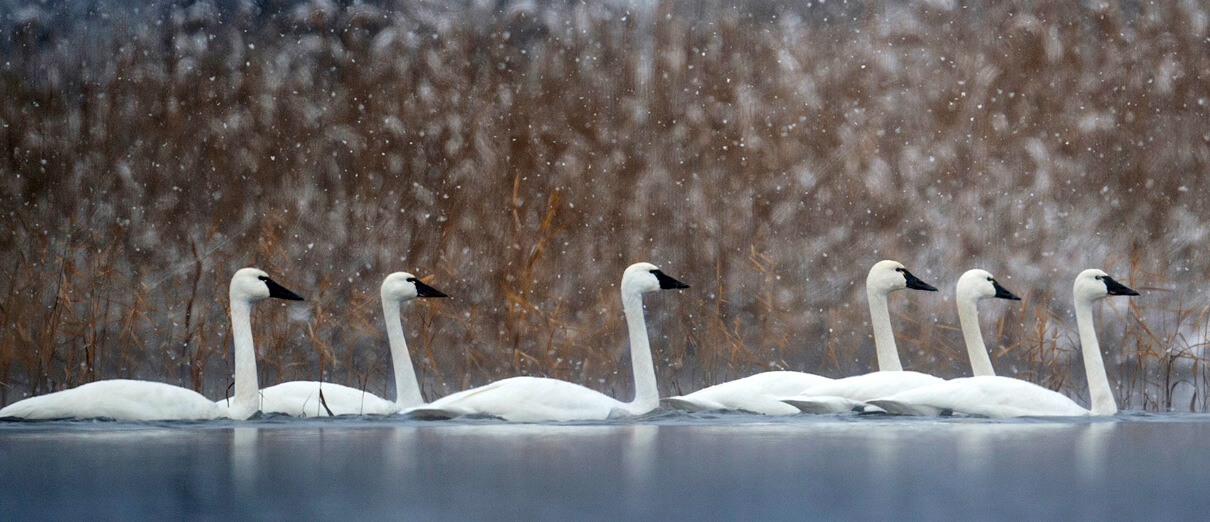
Family Ties
Tundra Swans are monogamous, and a mated pair will remain together for life. Pairs court by facing each other, spreading wings, and bowing while calling loudly. A mated pair establishes a breeding territory of almost one square mile near a tundra pond or lake, where female and male build a large, mounded nest of reeds, grasses, and mosses. The nest mound sometimes sits atop a muskrat lodge or hummock to afford a better vantage point. Often, prime nesting areas are reused from year to year.
The female swan lays an average of five large white eggs and does most of the brooding. Her mate sticks close by to guard the nest and larger territory from other swans and nest predators such as Golden Eagles, foxes, and weasels.
As with other waterfowl species such as Wood Duck and Canvasback, Tundra Swan cygnets are precocial — they hatch fully feathered with open eyes and are able to leave the nest immediately, although they cannot fly for several months. Both parents attentively care for their cygnets, which remain with them until the age of two years. Young Tundra Swans mature by their third year but may not begin breeding until four or five years old.
Immature Tundra Swans are easily identified by their grayish plumage, which gradually becomes fully white during their first winter, and by their pinkish-gray legs and beak, which blacken with age.
Doing Well, Despite the Challenges
The biggest threat facing the Tundra Swan on its Arctic breeding grounds is habitat loss due to oil and gas extraction and climate change. Pollution and wetland loss top the list along its migratory routes and on its wintering grounds.
Also, many swans are affected by lead poisoning, which occurs after the birds ingest spent shot as they forage on the bottoms of rivers and lakes in areas where hunting occurs. This swan species is regularly hunted as a recognized game species. Its North American numbers remain relatively healthy.
ABC encourages hunters and fishing communities to consider non-lead shot alternatives to protect Tundra Swans and other species likely to ingest this toxin, including the California Condor, Mourning Dove, and Common Loon.
Donate to support ABC's conservation mission!





































